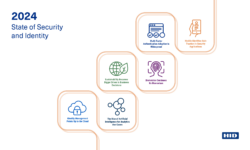IP Security Camera Market to Grow at 20% CAGR, 2017-2024, Report Says
Advancement in technology such as 4K resolution, edge-based video analytics and penetration of H.265 high-efficiency video encoding are among factors fueling growth in IP security cameras.

SELBYVILLE, Delaware — The IP security camera market is forecast to exceed $20 billion by 2024, according to a new research report by market research and strategy consulting firm Global Market Insights.
Unit shipments are expected to grow at more than 20% compound annual growth (CAGR) rate from 2017 to 2024. Technological proliferation, ubiquity of internet connectivity and the demand for remote monitoring are expected to drive IP camera market growth over the forecast period, according to the firm.
Advancement in technology such as 4K resolution, edge-based video analytics and penetration of H.265 high-efficiency video encoding is also poised to stimulate demand. The growing number of players in the network camera market and availability of low-cost manufacturing has been fueling the growth across the globe.
Global terrorist attacks in recent years have highlighted the need for governments to pay more attention to public security. In addition, the dropping IP camera market price trend has helped shorten the gap with analog systems.
The global IP camera market is marked by trends such as need for high resolution, government investments to improve security infrastructure, reduction in total cost of ownership and rise in demand from non-security applications such as smart home devices.
The growing demand for these systems in non-security applications such as integration with access control systems in smart home automation, e-Point of Sale (POS) terminals, automatic number-plate recognition (ANPR) are poised to offer additional opportunities for the network camera market.
Moreover, other factors such as improved sensor availability, new video analytics capabilities, wider adoption of thermal imaging, mobile access, intelligent building control, 360-degree vision and de-warping are contributing immensely towards penetration of the network camera market, according to the report.

U.S. IP camera market size, by commercial application, 2016 & 2024 (USD Million)
IP cameras systems have direct connectivity to the internet, therefore, concern among the public regarding data security and privacy could negatively impact IP camera market growth. In addition, these surveillance market solutions are not only expensive, but also pose risk of being vulnerable to destruction and vandalism, thereby hindering growth in developing regions, the report states.
The IP camera market has been segmented by product into fixed, pan/tilt/zoom (p/t/z) and infrared (IR) systems. Compact design, electronic p/t/z functions, built-in IR sensors, and environmentally resistant structures are trends driving adoption of IP cameras over their analog counterparts.
Deployment of a particular type of camera system depends upon the application need, lens type, lighting, cabling systems, power requirements and required resolution.
Centralized connectivity in the IP camera market offer basic analytics, video encoding and event triggering functions. Processing functions are carried by the central computer that runs on licensed software. Such solutions are primarily useful for the institutional setting and places where there is a dedicated central monitoring system.
However, decentralized connectivity solutions do not require dedicated software and can run individually with built in storage, with the segment expected to grow at a CAGR of more than 20%. Decentralized IP cameras are more expensive than centralized solutions, however offer higher flexibility in terms of operation and storage.
The Chinese IP camera market is expected to witness sharp growth due to the presence of a large number of market players offering low cost solutions in the region. Favorable government initiatives on city surveillance, smart city development and penetration of IoT devices are also expected to fuel the demand.
Features such as remote monitoring, live video feed on the mobile, single Power over Ethernet (PoE) connectivity, HD resolution and mobile access are driving demand for such solutions in residential applications. Ease of access, remote operation, scalability and flexibility to add more components are some of the key benefits of IP cameras solutions. 4K video surveillance, HD and megapixel cameras are gaining increased penetration across industry verticals.
If you enjoyed this article and want to receive more valuable industry content like this, click here to sign up for our FREE digital newsletters!

Security Is Our Business, Too
For professionals who recommend, buy and install all types of electronic security equipment, a free subscription to Commercial Integrator + Security Sales & Integration is like having a consultant on call. You’ll find an ideal balance of technology and business coverage, with installation tips and techniques for products and updates on how to add to your bottom line.
A FREE subscription to the top resource for security and integration industry will prove to be invaluable.







